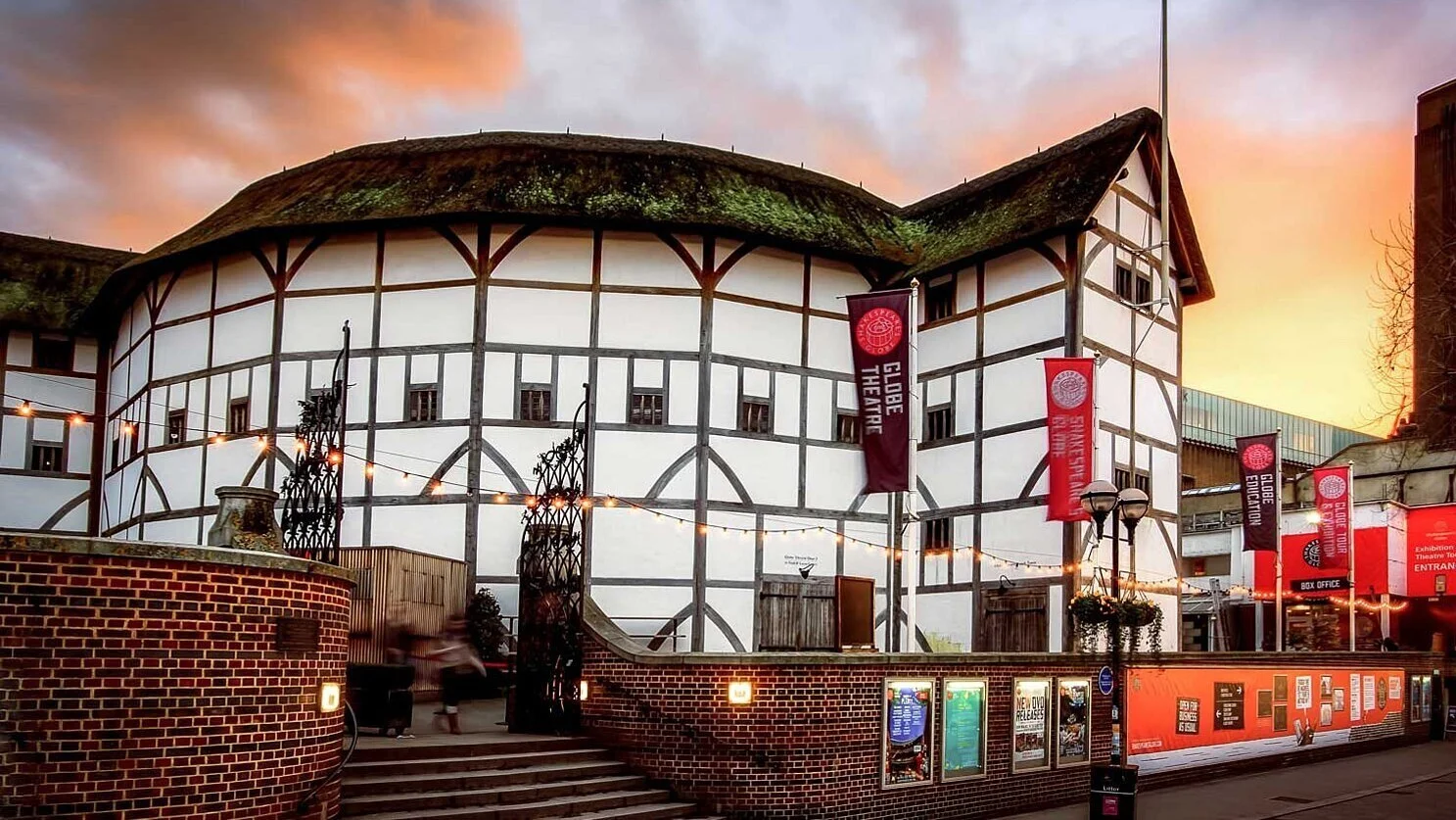CULTURAL IMMERSION AT SHAKESPEARE’S GLOBE
Experiencing Shakespeare’s Globe Theatre is one of the best ways to immerse yourself fully in the incredible range of culture and arts that exists in London. The fact that a Shakespearean theatre has been in London since 1599 means it’s been a part of the thread of the city for centuries.
Shakespeare’s Globe is a world-renowned performing arts venue, cultural attraction and education centre located on the bank of the River Thames in London. The current iteration of the Globe Theatre (built in 1997) stands only 750 feet from the original site of the first Globe.
Stepping into the Globe Theatre is still a small thrill. A space that demands to be taken in, so absolutely unlike any other. Walk through the pit doors and your eye is drawn immediately upwards – up those timber-frame columns, past the bustle of the balcony bays, up to the dark thatched roof, and away into that circle of sky overhead. When that’s blue, it’s unbeatable – bright, glinting, and warm – but clouds bring an atmosphere all of their own, of jeopardy, menace, and drama.
The Globe was an immersive experience long before that became a buzzword. The building folds itself around you like a wooden hug. It looms over you, yet at only three storeys high, its scale still feels human. You take it all in, all 360° of it, the whole “wooden O.” The Globe places you at the centre of something, surround by the hubbub, by other people, and even by history itself. Whatever you’re watching, the building itself becomes the star of the show. It just seems so…improbable.
Shakespeare called his theatre a ‘wooden O’ and like his historic playhouse our Globe Theatre is a 360° auditorium. With no roof over the central yard, the theatre is open-air and audiences who attend performances and tours are told to dress for the weather! Events will go ahead in rain, shine and snow.
Seats are arranged in galleries all around the wide, open stage, so spectators and performers can see each other at all times. The Globe Theatre is a space where the audience has always been a vital component of the performance.
The first opened in 1599 and was built by the Lord Chamberlain’s Men, the company that William Shakespeare wrote for and part-owned.
They think that the first play Shakespeare wrote for the original Globe was Julius Caesar in spring 1599. Later that year he also wrote As You Like It and made a start on Hamlet. Over the next fourteen years Shakespeare wrote some of his greatest plays, including Twelfth Night, Othello, King Lear, Macbeth, and Antony and Cleopatra. Other playwrights wrote for the Globe during this time too, including Ben Jonson, Thomas Middleton and John Fletcher.
In 1613, during a performance of Shakespeare’s Henry VIII (co-written with Fletcher), a mis-fired prop canon caused the thatch roof to catch fire. The entire theatre burnt down within two hours, according to eyewitness reports (miraculously, no one was killed). The company rebuilt the Globe in a year – with a tiled roof. The second Globe operated until it was closed down by parliamentary decree in 1642.
In 1609 Shakespeare’s company started performing in the indoor Blackfriars Playhouse as well as the Globe. It was here that Shakespeare conceived his final great plays, including The Tempest.
The current Globe Theatre opened in 1997, after many years of campaigning by the founder of Shakespeare’s Globe Trust, Sam Wanamaker.
After one of the most divided, isolating, and lonely times in global history, Summer 2021 at Shakespeare’s Globe celebrates all that unites us: story, laughter, tears, nature, and of course theatre.
This summer they’ll celebrate the lovers and the poets, revel in the power of our strong imaginations, and rediscover the wonder of theatre.
They cannot wait to open our great oak doors once again, and welcome you – the audience – safely back into the unique spaces for what promises to be a season of love, life and catharsis. Find out what’s on here starting from the 4th of June.



